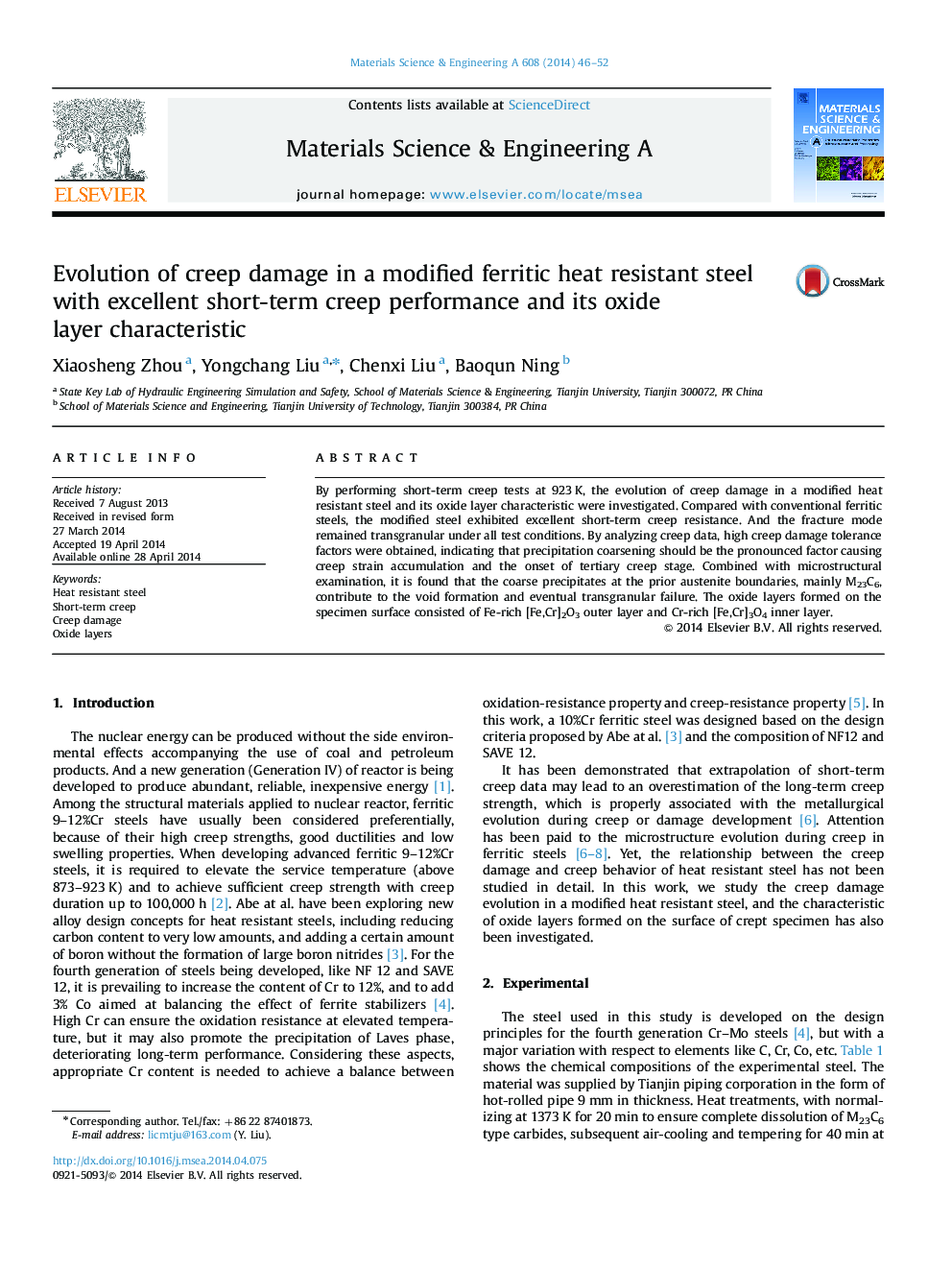| Article ID | Journal | Published Year | Pages | File Type |
|---|---|---|---|---|
| 1575090 | Materials Science and Engineering: A | 2014 | 7 Pages |
Abstract
By performing short-term creep tests at 923Â K, the evolution of creep damage in a modified heat resistant steel and its oxide layer characteristic were investigated. Compared with conventional ferritic steels, the modified steel exhibited excellent short-term creep resistance. And the fracture mode remained transgranular under all test conditions. By analyzing creep data, high creep damage tolerance factors were obtained, indicating that precipitation coarsening should be the pronounced factor causing creep strain accumulation and the onset of tertiary creep stage. Combined with microstructural examination, it is found that the coarse precipitates at the prior austenite boundaries, mainly M23C6, contribute to the void formation and eventual transgranular failure. The oxide layers formed on the specimen surface consisted of Fe-rich [Fe,Cr]2O3 outer layer and Cr-rich [Fe,Cr]3O4 inner layer.
Related Topics
Physical Sciences and Engineering
Materials Science
Materials Science (General)
Authors
Xiaosheng Zhou, Yongchang Liu, Chenxi Liu, Baoqun Ning,
